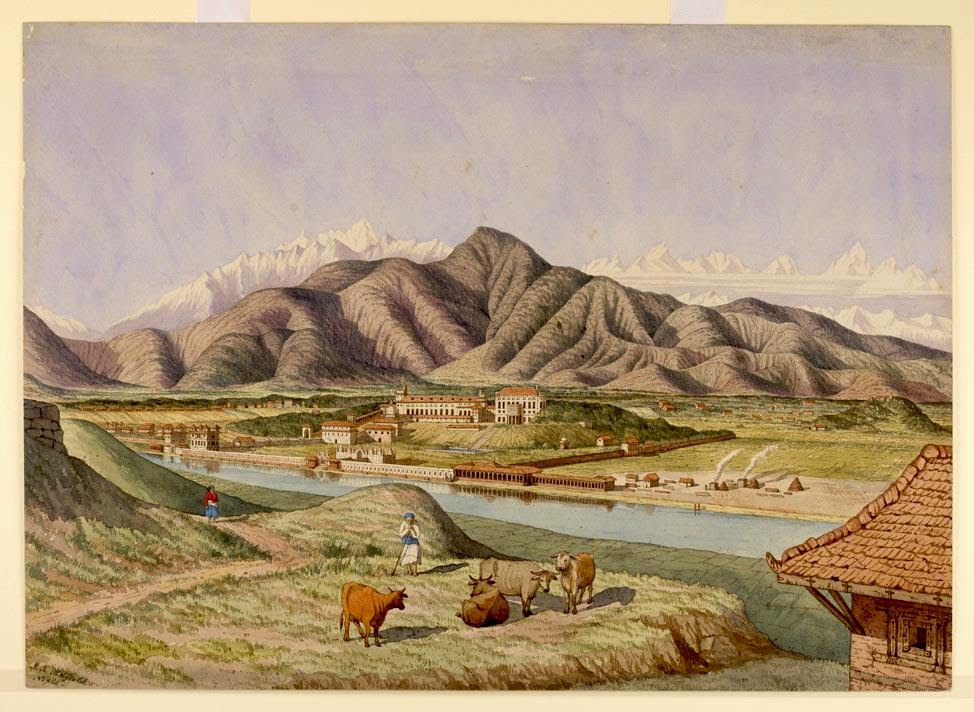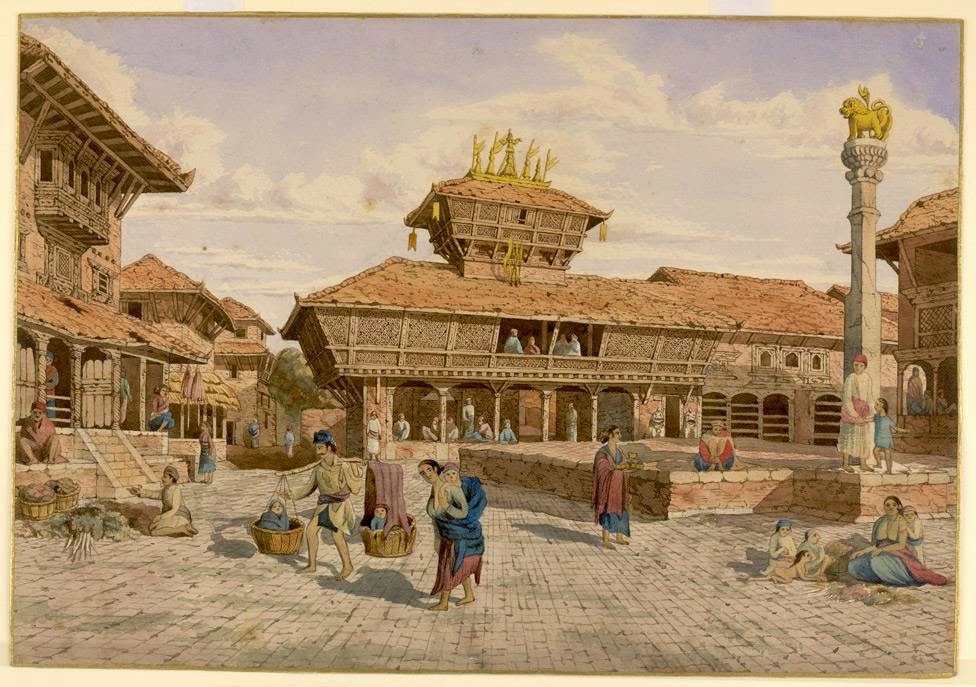The English watercolourist Henry Ambrose Oldfield (1822-1871) immortalised scenes from traditional Nepal, mainly in the 1850s. Oldfield was a medical doctor and traveller. He served as a medical surgeon in Bengal. His wonderful watercolour renderings of scenes from Nepal were collected and published after his death in a work entitled: Sketches from Nipal, historical and descriptive ... To which is added an essay on Nipalese Buddhism, and illustrations of religious monuments, architecture and scenery, etc [Edited by E O] 2 volumes (W H Allen & Co, London, 1880). The following plates are from that work. Select a picture to see an enlarged view.
Thappatalli, the Residence of Maharaja Jang Bahadur at Kathmandu in Nepal - 1852
Nyatapola Temple at Bhaktapur
The Durbar, or Royal Palace, at Lalitpur (Patan) in Nepal - 1855
Concerning this painting Oldfield wrote:
"The Pashupatinath temple, seen in this view, is dedicated to Shiva and is situated beside the Bagmati river. There has been a Shiva temple on this spot since before the 9th century and the present temple was built by King Bhupalendra Malla in 1653. The square two-tiered building stands on a single-tiered plinth in an open courtyard. The temple has silver-plated and gilt doors with niches on both sides containing images of gold painted guardian deities."
Interior courtyard of monastery at Lalitpur (Patan) in Nepal - 1854
Inscribed by Oldfield as: "No. 4. Temple of Mahadeo, built A.D. 1650; with a corner of a Temple of Hurreeshunkur, built A.D. 1650. Bhatgaon."
The Kot in Katmandu. Festival of Durga puja. (Dussehra)
"Hindu temple at Lalitpur - Mahadeo or Shiva"
About this picture, Oldfield wrote:
Yours,
Harper McAlpine Black















Very good website, thank you.
ReplyDeleteBraass Bucket Balti For Puja
Order Handicrafts Product
Handicrafts Product Online